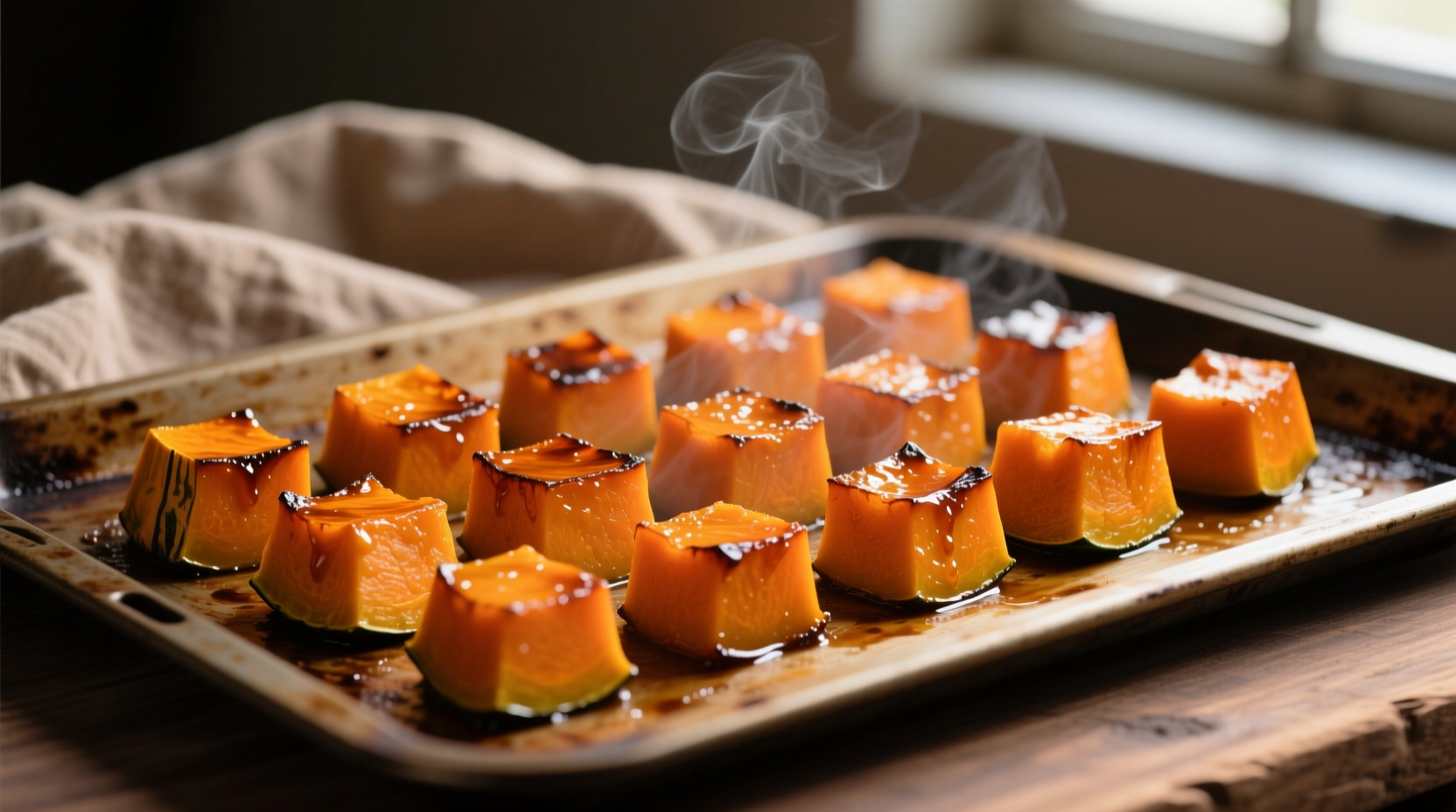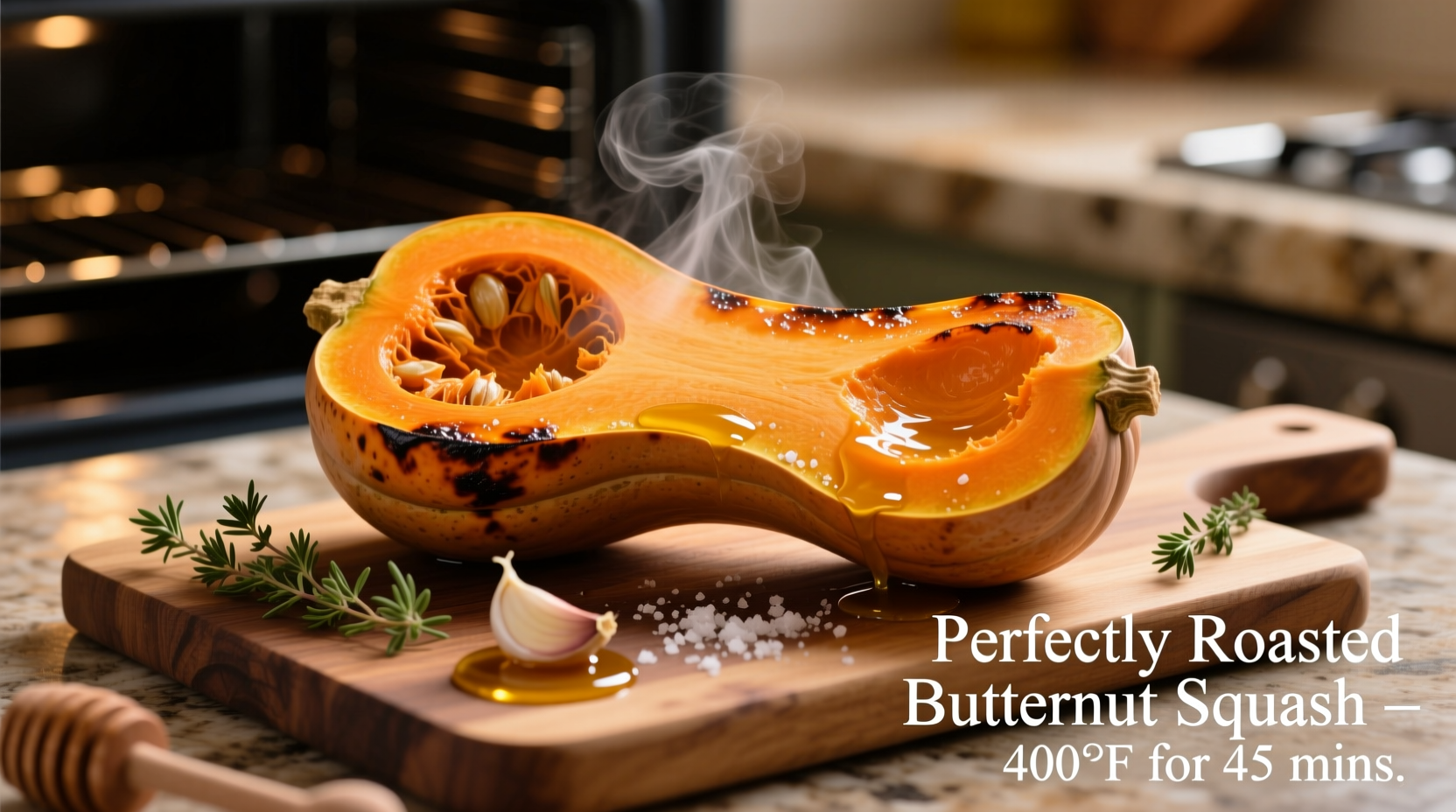Perfectly roasted butternut squash requires cutting 1-1.5 inch cubes, tossing with 1 tablespoon olive oil per pound, seasoning with salt and pepper, and roasting at 400°F (200°C) for 25-35 minutes until fork-tender with caramelized edges. This foolproof method yields sweet, nutty squash every time with minimal effort.
There's nothing quite like the sweet, nutty aroma of butternut squash roasting in the oven. This versatile winter squash transforms from hard and intimidating to tender and caramelized with minimal effort. Whether you're meal prepping, making a side dish, or creating a hearty main course, oven-roasted butternut delivers consistent results that boiling or microwaving simply can't match. The dry heat of the oven concentrates flavors while creating those irresistible crispy edges that make roasted vegetables so satisfying.
Why Oven Roasting Beats Other Cooking Methods
While steaming or boiling butternut squash is faster, these methods leach out natural sugars and result in bland, watery texture. Oven roasting triggers the Maillard reaction and caramelization, enhancing the squash's natural sweetness. According to food science research from the USDA Agricultural Research Service, roasting vegetables at high temperatures increases their antioxidant availability by up to 30% compared to boiling.
| Cooking Method | Texture Result | Flavor Development | Time Required |
|---|---|---|---|
| Oven Roasting | Crispy edges, creamy interior | Deep caramelization, enhanced sweetness | 25-35 minutes |
| Boiling | Uniformly soft, sometimes waterlogged | Subtle, muted flavor | 15-20 minutes |
| Steaming | Firm but moist throughout | Mild flavor retention | 12-18 minutes |
Your Preparation Checklist Before Heating the Oven
Proper preparation makes all the difference in your roasted butternut results. Start with selecting a squash that feels heavy for its size with a uniform tan color and minimal blemishes. Avoid any with soft spots or green patches, which indicate under-ripeness.
Safety first: Butternut squash has a tough outer skin that requires careful handling. Professional chefs like those at the Culinary Institute of America recommend using a heavy chef's knife and stable cutting surface. Place the squash on its side, slice off both ends, then carefully peel downward using a vegetable peeler. Cut in half crosswise at the neck-body junction, scoop out seeds with a spoon, and dice into uniform 1-1.5 inch cubes.

The Foolproof Roasting Process Step-by-Step
Follow this professional-tested timeline for perfect results every time:
- Prep (5 minutes): Toss cubed squash with 1 tablespoon olive oil per pound, 1/2 teaspoon salt, and freshly ground black pepper. For extra flavor, add 1/4 teaspoon cinnamon or smoked paprika.
- Arrange (2 minutes): Spread in a single layer on a parchment-lined baking sheet with space between pieces. Crowding causes steaming rather than roasting.
- Initial Roast (15 minutes): Place in preheated 400°F (200°C) oven. The high heat creates immediate caramelization.
- Flip & Continue (10-20 minutes): Flip pieces halfway through cooking. Total time varies by oven and cube size—check for doneness when fork-tender with golden-brown edges.
Troubleshooting Common Roasting Issues
Even experienced cooks encounter challenges with roasted butternut. Here's how to solve the most frequent problems:
- Soggy squash: Your oven temperature might be too low or pieces overcrowded. Increase to 425°F and use two baking sheets if necessary.
- Burnt edges: Your oven runs hot or pieces are too small. Reduce temperature to 375°F and check 5 minutes earlier.
- Uneven cooking: Cube sizes vary. Invest in a mandoline slicer for consistent pieces.
- Lack of caramelization: Not enough oil or oven temperature too low. Toss with additional oil and increase heat.
Convection ovens require special attention—reduce temperature by 25°F and check 5 minutes earlier than standard recipes indicate. Gas ovens often have hot spots, so rotate the baking sheet halfway through cooking.
Serving Ideas and Flavor Variations
Transform your basic roasted butternut into exciting dishes with these chef-approved variations:
- Maple-Glazed: Toss finished squash with 1 tablespoon pure maple syrup and 1/4 teaspoon cayenne pepper
- Mediterranean Style: Add 1 teaspoon dried rosemary and 2 minced garlic cloves before roasting
- Curry Roasted: Mix with 1 tablespoon curry powder and 1/4 cup coconut milk before baking
- Salad Base: Combine with arugula, toasted pecans, and apple cider vinaigrette
Leftover roasted butternut shines in next-day applications. Puree with vegetable broth for an instant soup, fold into risotto during the last 5 minutes of cooking, or add to scrambled eggs for a sweet-savory breakfast. According to a USDA Food Preservation Study, properly stored roasted vegetables maintain optimal quality for 3-5 days in airtight containers.











 浙公网安备
33010002000092号
浙公网安备
33010002000092号 浙B2-20120091-4
浙B2-20120091-4